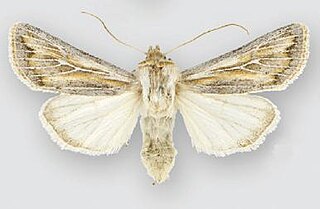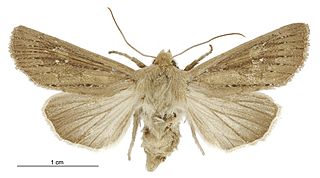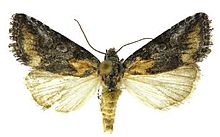
Otero County is a county located in the U.S. state of New Mexico. As of the 2020 census, the population was 67,839. Its county seat is Alamogordo. Its southern boundary is the Texas state line. It is named for Miguel Antonio Otero, the territorial governor when the county was created.

Alamogordo is the county seat of Otero County, New Mexico, United States. A city in the Tularosa Basin of the Chihuahuan Desert, it is bordered on the east by the Sacramento Mountains and to the west by Holloman Air Force Base. The population was 31,384 as of the 2020 census. Alamogordo is widely known for its connection with the 1945 Trinity test, which was the first ever explosion of an atomic bomb.

Turnstones are two bird species that comprise the genus Arenaria in the family Scolopacidae. They are closely related to calidrid sandpipers and might be considered members of the tribe Calidriini.

The ruddy turnstone is a small cosmopolitan wading bird, one of two species of turnstone in the genus Arenaria.

White Sands National Park is an American national park located in the state of New Mexico and completely surrounded by the White Sands Missile Range. The park covers 145,762 acres in the Tularosa Basin, including the southern 41% of a 275 sq mi (710 km2) field of white sand dunes composed of gypsum crystals. This gypsum dunefield is the largest of its kind on Earth, with a depth of about 30 feet (9.1 m), dunes as tall as 60 feet (18 m), and about 4.5 billion short tons of gypsum sand.

The Sacramento Mountains are a mountain range in the south-central part of the U.S. state of New Mexico, lying just east of Alamogordo in Otero County. From north to south, the Sacramento Mountains extend for 85 miles (137 km), and from east to west they encompass 42 miles (68 km).

The Tularosa Basin is a graben basin in the Basin and Range Province and within the Chihuahuan Desert, east of the Rio Grande in southern New Mexico and West Texas, in the Southwestern United States.

Ammophila arenaria is a species of grass in the family Poaceae. It is known by the common names marram grass and European beachgrass. It is one of two species of the genus Ammophila. It is native to the coastlines of Europe and North Africa where it grows in the sands of beach dunes. It is a perennial grass forming stiff, hardy clumps of erect stems up to 1.2 metres (3.9 ft) in height. It grows from a network of thick rhizomes which give it a sturdy anchor in its sand substrate and allow it to spread upward as sand accumulates. These rhizomes can grow laterally by 2 metres in six months. One clump can produce 100 new shoots annually.

Oliver Lee Memorial State Park is a state park of New Mexico, United States, whose two tracts preserve a canyon in the Sacramento Mountains and Oliver Lee's historic 19th-century ranch house. The 640-acre (260 ha) park is located in Otero County at an elevation of 4,363 feet (1,330 m). It is situated at the base of Dog Canyon and provides opportunities for camping, hiking, picnicking, wildlife viewing, a nature trail, and guided tours of the ranch house.

Sparkia is a genus of moths of the family Noctuidae. It contains only one species, Sparkia immacula, which is found in Arizona and New Mexico.

Protogygia whitesandsensis is a moth of the family Noctuidae. It is found in the White Sands National Park, Otero County, New Mexico. The length of the forewings is 14–17 mm.

Protogygia pectinata is a moth of the family Noctuidae. It is found in the White Sands National Park, Otero County, New Mexico.

Protogygia comstocki is a moth of the family Noctuidae. It is found in the White Sands National Park, Otero County, New Mexico as well as the Hanford Central and Wahluke dunes in Washington.

Protogygia biclavis is a moth of the family Noctuidae. It is found in the White Sands National Park, Otero County, New Mexico as well as California, Utah and Arizona.

Euxoa lafontainei is a moth of the family Noctuidae. It is found in White Sands National Monument, Otero County, New Mexico.

Ichneutica phaula is a moth of the family Noctuidae. It is endemic to New Zealand. It is found only in the South Island in the Nelson district, the eastern side of the South Island and Stewart Island. I. phaula inhabits tussock grasslands and coastal sand dunes. Host species include Ficinia spiralis, Ammophila arenaria, Poa cita and other "tussock grasses". The adults of this species are on the wing from October to December and are attracted to sugar traps. I. phaula is similar in appearance to both I. micastra, with whom it does not share a range, and I. sapiens which differs from I. phaula as I. sapiens is darker and has a more reddish tinge.
Cochylis yinyangana is a species of moth of the family Tortricidae. It is only known from the White Sands National Park in Otero County, New Mexico and at Carlsbad Caverns National Park in Eddy County, also in New Mexico.
Aleptina junctimacula is a moth in the family Noctuidae. It was described by André Blanchard in 1984 and is found in North America.
Aleptina aleptivoides is a moth in the family Noctuidae first described by William Barnes and James Halliday McDunnough in 1912. It is found in North America.
Aleptina semiatra is a species of moth in the family Noctuidae. It is found in North America.
















